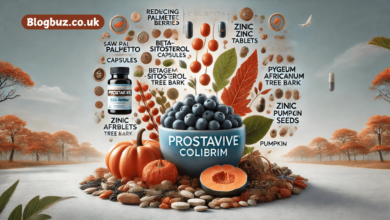Fine Tuning Drug Launches: Insights on Gaps and Key Strategies to Ace the Market

Well, it’s an intriguing picture altogether- where on one end we are seeing the technical revolution promised by Industry 5.0, while on the other the a dramatic rise in new drug development. The competition has never been this fierce and this is what makes the whole drug launch scenario crucial to acknowledge. As payer supremacy blooms and advanced therapies target smaller patient demographics with convoluted needs, structuring and executing a potential launch strategy becomes progressively arduous.
A recent study in the US reports that there exists a wide variability in launch performance. Some of the new drugs continued with their successful launch trajectory over consecutive years, while the other failed to meet expectations and remained on that course.
Subsequently, three product attributes are substantial to the results in market performance: product receiving priority review by the US FDA, orphan, and specialty drugs. These products tend to address high unmet needs in the market, the regulatory approval methodology is said to be prompt, and the manufacturing’s pricing authority can be bigger than in drug listings with a rooted standard of care.
It was also surveyed that drugs launched by popular enterprises underperform compared to their counterparts. This distinction holds even when accounting for product attributes most linked with substantial launch performance. A plethora of feasible factors may contribute to this- functional silos that intercept bigshot enterprises from developing a capacitive expertise in a defined disease area; a one-size fits all thought process to launch, and enticements that initiate tension between enterprise and functional goals.
Gaps that Resulted in Missing Expectations
- Restricted Market Access: This can be best described with examples like- the application of formulary restrictions like step edits, unreasonable patient cost-sharing due to negative placement on the formulary, lack of coverage, etc.
- Bad Product Distinction: For instance, a failed proposition that was short on value or the product formulation made barriers that were not balanced by the supplementary clinical benefit, according to the consumer’s perspective.
- Knowledge deficiency in market needs: Best portrays when brand teams underestimate the complexity of converting consumers, patients, and prescribers from existing therapeutic pipelines.
Industry 4.0 tried to alleviate missing expectations by focusing on some specific approaches such as
- A robust methodology was established to define the probability of each product in terms of regulatory, market penetration, and technical success.
- Holistic strategic planning: Enterprises try to understand where they can be a market leader, construct long-term relationships, and secure competitive advantage. They fought to disrupt internal silos, bolster cross-functional input across market demands, and streamline enterprise and functional goals around these demands.
- Novel approaches to intelligence and stakeholder participation- Enterprises did their best to incorporate new tools to more efficiently bifurcate the market. They took into account the wide perspectives of payers, strategized for distinctive benefit designs, and jumped to take on risks. Subsequently, they sought speedy input on target profiles and applied that input to clinical trial design.
- Companies established a multidisciplinary approach to launch execution that stabilizes flexibility and consistency. Brand teams tried to portray customer value propositions and points of distinction throughout consumer types and segments. They strived to supervise performance using steady metrics throughout the product portfolio.
Tweaking it Correctly: Altering Product Launch Methodologies in Pharma 5.0
The drug launch of an organization doesn’t have to be uncertain anymore. With meticulous planning, and ground-breaking approaches to market intelligence can do the right job. Let’s see what needs to be done, in detail-
- The transition from product-centricity to customer-centricity: The earlier pharma industry phase witnessed organizations executing drug launches based on a product-centric model which includes optimizing product visits and target product profiles. However, the current market is more inclined towards a patient-centric launch methodology which will revolutionize the thought process of the brand teams. It would clarify why the customer needs it in the first instance and all the possible reasons behind its rejection despite its inspiring clinical data.
- Leveraging the functions of the new product planning (NPP) team: Despite displaying a significant role as a futurist where it is still at a nascent stage anticipating digital tools and patient centricity, it is quite undervalued and understaffed. Being the bridge between end consumers and clinical trial experts, NPP teams need to be leveraged more toward a successful launch team result.
- Better synchronization between US and global teams: The ongoing organizational architecture which stands on a global launch team to structure a launch casebook that all countries including the US are supposed to seek and execute has many issues connected to it. There has to be a robust universal operational structure in launch sessions that directs every country toward following a standardized strategy. This eliminates unnecessary dichotomy.
Advanced Strategies that Pharma Launch Teams Should Leverage
A paradigm shift in the commercial model and the transitioning digital boom in the entire pharma value chain is anticipated with Industry 5.0 which will completely change the outlook of a typical drug launch.
- Embedded GTM Planning: Pharma enterprises should work towards a leaner brand marketing team, indicating the practices of embedded go-to-market teams.
- Inclusion of Digitalization in the Launch Process: For accurate and speedy data analysis, customer insights, managing content, and collaborations, enterprises should adopt cloud platforms like ZAIDYN, Veena Vaul,t etc.
- Putting Consumer Journey at the Focal Point: Earlier, drug launch teams were only able to monitor the patient’s journey through primary market research studies, which was restrictive. With time, the industry is now adapting to EHR systems by providers which allows meticulous patient mapping using data analytics. This should be adopted and embraced more to attain optimized results for patients and enhance the acquisition of the new drug.
- Nudge Programs/Behavioural Shifting through Messaging: The acquisition of a new drug in the market would expect some or all of the behaviors of patients, HCPs, and payers to shift accordingly.
Smart companies need to level up the game by diving deep into behavioral science relative to their product launch. This science is also being incorporated to advocate behavior change messaging and initiating nudge intervention programs to direct consumers towards desired outcomes.
- Focusing on Initial Traction: Reports of past drug launches have evoked a notion that HCP engagement during the initial five patients is crucial for gaining confidence and consumer approval for a launch organization. Launch teams should strive towards optimizing the initial trial phase experience for HCPs with enhanced engaging content, holistic patient support services, and AI-driven customer support.
Conclusion
It can be concluded that the evolving landscape of drug launches seeks a transformative approach that blends customer-centric strategies, digital revolutions, and behavioral insights. As the industry shifts towards a riveting 5.0 phase with unprecedented novelties, pharma enterprises must pivot from traditional operational structures to more flexible, data-driven, and patient-centric models.




